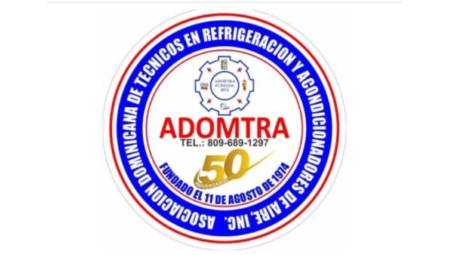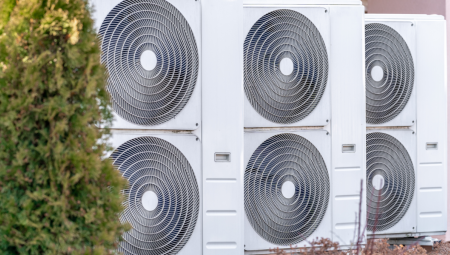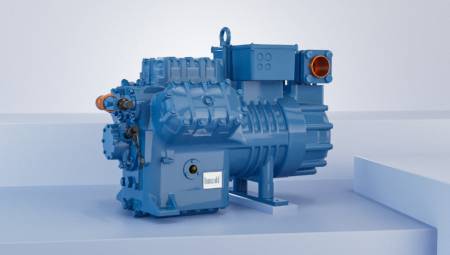 Different key factors that influence the design and development of this kind of technologies.
Different key factors that influence the design and development of this kind of technologies.
by Ernesto Porras*
Introduction
Thermal districts distribute thermal energy in the form of ice/hot water from a central production plant to final consumers (customers) of a residential, commercial, institutional or industrial type for use typically in HVAC systems. These systems reduce energy costs and greenhouse gas emissions, while freeing up valuable space in buildings by centralizing ice/hot water production equipment through economies of scale and equipment management, optimizing the use of fuels, energy, and resources.
Whether the system is for public or private service, these types of systems have economic and environmental benefits that depend heavily on the application. Political feasibility must be considered, particularly if a city or government body is considering a cooling district facility. Historically, successful cooling districts in North America and Europe have had political backing and community support.
Applicability
Thermal districts are best used in sectors where the thermal load density is high and the number of equivalent hours of cooling load (or hours of operation) is high. A high thermal load density is needed to cover the capital investment of the transmission and distribution system, which usually constitutes about 50% of the total cost of the system. This makes thermal districts more attractive for serving densely populated urban areas and clusters of high-density buildings with high thermal loads.
Typical buildings for thermal districts are:
1. Large university campuses.
2. Urban business centers such as financial zones, hotels, etc.
3. Hospitals.
4. Airports.
5. Research centers.
6. Military bases.
7. Groups of office buildings that are grouped in a particular area.
Urban environments where real estate is very expensive are ideal locations, as they allow building owners to make the most of the technical area that HVAC equipment would occupy by moving most of it out of the building. Low-density residential areas are generally not attractive markets for thermal districts.
Components
Thermal districts may employ industrial-grade equipment designed to use multiple fuels and refrigerants and employ technologies that would not otherwise simply be economically or technically feasible for individual building HVAC systems.
Thermal districts have three main components: The central ice/hot water production plant, the distribution network, and the consumption or interconnection systems with the end user (energy transfer station).
1. Central plant for the production of ice or/or hot water. In the central plant, ice or hot water is produced by one or more of the following methods:
- Absorption refrigeration equipment.
- Electrically driven coolers such as reciprocating, screw or centrifugal.
- Gas/steam turbines or mechanically driven equipment.
- Combination of mechanically driven systems and absorption systems driven by thermal energy.
2. Distribution network or pipes that transport water. Piping can be the most expensive part of a thermal district. Water pipes usually consist of systems with and without thermal insulation that are buried in the floor. The installation of these networks requires permits and special coordination with non-users of the system to allow the passage of these in case they are not within the premises of the project owner. Because the initial cost is high, it is important to maximize the use of the water distribution pipe network.
3. Interconnection of the end user with the distribution system. This third component allows the water to be used directly by the building's air conditioning systems or indirectly isolated by a heat exchanger.
Proceeds
1. Benefits to the building owner or client
- Reliability. The benefits most frequently cited by building owners (customers) who contract the services offered by thermal districts are the convenience, ease of use and reliability of the district's thermal energy service.- Most of the systems that make up the thermal districts work with four nines of reliability (service is available 99.99% of the time annually). In fact, operational reliability has been a hallmark of the cooling district industry. The reliability of the service is critical when attending to a primary care hospital, a research laboratory or a government data center and for this the thermal districts offer a highly reliable service. A building owner who is a customer of a thermal district has the advantage of contracting the optimal air conditioning capacity by contract with the thermal energy supplier of the thermal district. In most cases, the customer will contract the maximum cooling demand per actual hour set in peak summer conditions, however, the contract capacity is often 30% to 50% less than what would have been installed in the building its own independent ice/hot water production plant.
- Operational personnel. One of the main advantages for a building owner is that the operating staff of HVAC systems can be reduced. When ice/hot water is provided to the building as a utility company would and depending on the level of sophistication of the building's HVAC system controls, such personnel can likely be reduced.
- Usable space. Usable space in the building increases when a boiler or water cooler and equipment related to HVAC systems are no longer needed. Noise and vibration inside the building associated with this equipment is also eliminated. In modernization projects, this space usually cannot be converted into office space, however, it provides the opportunity to increase storage or other use.
2. Benefits towards the environment. The production of ice/hot water in a central plant is usually more efficient than the use of equipment in the building, therefore environmental impacts are reduced. The greatest efficiencies arise due to the possibility of having a larger and more efficient equipment and the ability to adjust its operation so that the point of maximum efficiency of this coincides with the thermal load demanded by the buildings interconnected to the system. Thermal districts can take advantage of the diversity of thermal load demanded by system users to implement technologies such as thermal ice storage more easily than dedicated HVAC systems for individual buildings.
For ice/hot water production plants with electrically driven equipment, having equipment with the highest possible efficiency becomes the most relevant environmental benefit since the ice/hot water plants of normal buildings also work with electrically driven equipment. There may be additional environmental benefits of producing ice or hot water from a large central plant, such as the ability to use treated wastewater effluents as cooling tower replenishment water and the ability to handle refrigerants in a safer and more controlled environment.
When fuels are burned to generate cooling through absorption or mechanically powered gas/steam turbines or chillers, emissions from central ice/hot water production plants are easier to control than those from individual plants and generally produce fewer pollutants due to the robustness and quality of the equipment, a higher energy efficiency of these and the highest level of maintenance they must have.
Refrigerants and other chemicals can be more easily monitored and controlled in a central ice/hot water production plant. When site conditions allow, the remote location of the plant reduces many of the concerns of using ammonia cooling systems.
3. Economic benefits. A thermal district can offer many economic benefits. Even though the basic costs are borne by the owner or operator of the central ice or hot water production plant, the end user can reap the benefits of economies of scale.
- High energy efficiency. A larger ice/hot water production plant can achieve higher energy efficiencies and lower greenhouse gas emissions than if you had several smaller plants.
When strict local regulations for emissions, water consumption, etc. must be met, the automation and control system is also more economical for large central plants. The part-load energy performance of large central plants can be more efficient than that of many independently installed small systems because the larger plant can modulate the ice water outlet and operate with one or more cooling circuits as required by the thermal load demanded by the buildings. Central ice/hot water plants of buildings generally operate at an average efficiency of 1.2 kW/TR (2.9 COP); while the ice/hot water production plants of the thermal districts can have average efficiencies around 0.85 kW/TR (4.1 COP) and up to 0.70 kW/TR (5.0 COP) in systems that feature thermal ice storage.
Therefore, the efficiency of producing ice/hot water in a thermal district is about 40% higher than in a central cooling plant of a building and up to 70% more if the thermal district has thermal storage. Similarly, thermal districts use typically industrial automation systems that offer a higher level of system control and monitoring compared to commercial-type decentralized cooling systems.
- Primary energy available. While at the level of civil and architectural infrastructure for buildings it may not be practical to produce ice water through absorption chillers, this is possible in larger central ice water production plants. The use of high-voltage chillers can also be impractical in cooling plants for buildings, except those intended for thermal districts.
- Equipment maintenance. With less equipment, there are proportionally fewer activities related to maintenance, cost reduction and fewer staff for technical service.
- Insurance. Both property and liability insurance costs can be significantly reduced with the removal of boilers, water coolers, motor pumps and electrical switches from inside the building, as the risk of fires or accidents is reduced.
Thermal districts not only offer versatility, reliability, reduction in operating costs and mitigation of greenhouse gas emissions, but the use of these systems allows large urban centers to plan their civil and architectural infrastructure in such a way that the environmental impact in terms of noise, vibration, aesthetics, etc., towards citizens and end-users of these systems is lower.
It is key in this sense an early planning and integrated design of the thermal district, guided by a commissioning process, which allows to reduce the initial cost of the district, have a correct installation of the different components and have optimal operating costs.
* Eng. Ernesto Porras, Consultant in Air Conditioning, Cooling Districts, Thermal Storage and Indoor Air Quality - [email protected]














